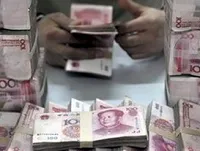
China’s banking regulator throws small business a lifeline
New rules lowering reserve ratio for loans to SME’s designed to get credit flowing back to the country’s suffering small businesses
Here’s more from HSBC:
| Responding to SMEs' hardship, China's banking regulator has decided to loosen the rules of capital adequacy requirement, loan to deposit ratio and NPL ratio for lending to SMEs. Although this move may not be sufficient to solve the long-standing problem of SME funding, it should help to ease their pain. Thus, it leaves room for Beijing to continue overall credit tightening in the months ahead.We expect another 100bp hike in the reserve ratio and one more 25bp rate hike in the coming months, if not weeks. Facts: The main policies include: - giving priority to banks-issued financial bonds that are designated to SMEs lending - applying a lower risk weighting for loans no more than RMB5mn or US$772,000 when - loans to small enterprises no more than RMB5mn or US$772,000 are excluded from the calculation of the bank's loan to deposit ratio - applying differentiated standards to non-performing-loan ratios for SMEs and increasing the tolerance level of SMEs' NPL ratios Implications These measures should ease some funding pain borne by the SMEs, though solving the long-standing problem of SME funding requires more structural reforms. It not only provides incentives for banks to lend more to small enterprises, but also keeps the small amount lending from the current stringent regulatory rules. So hopefully it will improve the financing conditions for SMEs, which account for over 80% of employment. While the relaxation on lending rules to small enterprises serves as a structural adjustment to the lending policy, it also leaves room for Beijing to continue with overall credit tightening in the months ahead. The official targets of around 15% growth in credit and 16% growth in M2 remain unchanged and should be sufficient to support growth of around 9%. The key is to keep tightening until inflationary pressures are meaningfully contained.We expect another 100bp hike in the reserve ratio and one more 25bp rate hike in the coming months, if not weeks. Bottom line: Easing lending rules to SMEs should help to improve lending to SMEs. It also leaves room for Beijing to continue with overall credit tightening in the months ahead. Our call for another 100bp hike in the reserve ratio and one more 25bp rate hike remains unchanged. |




![Lorem Ipsum [ABF 1]](https://cmg-qa.s3.ap-southeast-1.amazonaws.com/s3fs-public/styles/exclusive_featured_article/public/2025-03/a_hand_pointing_to_a_futuristic_technology_5b87c9d0e3_1.png.webp?itok=2w0y1WhS)


![Cross Domain [Manu + SBR + ABF + ABR + FMCG + HBR + ]](https://cmg-qa.s3.ap-southeast-1.amazonaws.com/s3fs-public/styles/exclusive_featured_article/public/2025-01/earth-3537401_1920_4.jpg.webp?itok=WaRpTJwE)







 Advertise
Advertise

